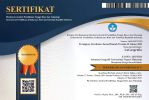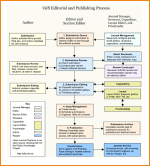Makna Simbolik Liang Erong Bagi Masyarakat Tana Toraja
(1) Universitas Negeri Makassar
(2) Universitas Negeri Makassar
(3) Universitas Negeri Makassar
(*) Corresponding Author
DOI: https://doi.org/10.35580/lageografia.v19i1.14842
Abstract
Cultural diversity in Indonesia is something that cannot be denied, which is caused by the geographical conditions of the Indonesian territory. The continuity and development of local culture needs to be preserved and avoided from obstacles. This study aims to determine: 1). Form of liang erong, especially the people of Tana Toraja. 2). The meaning of the carvings of each type of liang erong, especially the Tana Toraja people. This type of research is qualitative research with an ethnographic approach. The data in this study were taken by means of observation, interviews and documentation. The results showed: 1) The forms of Erong burrows found in the Tana Toraja area consisted of boats, mortar, buffalo and pigs. Differences in shape, size, cover form, decoration and orientation are strongly influenced by factors of belief, social stratification, mass and natural conditions around them. 2) The meaning of the erong carvings as a sign of hope for the ancestors, a sign that a person is smart and wise, a sign of courage, nobility and nobility, an appreciation, a meaning as a warning to society, a sign that symbolizes wealth or glory, the meaning that to link property to the house must be in an honest way and need cooperation within the family or community, meaning as a symbol of the greatness of the Toraja nobility. The findings of this study can help the development of disciplines in the field of cultural geography and as an inventory of existing national cultures, especially the diversity of symbolic meanings of erong.
Keywords
Full Text:
PDFReferences
Antropologi II, S. T. (1990). Jakarta: Penerbit Universitas Indonesia. UI-Press.
Awaliyah, N. R., Hasriyanti, H., & Maddatuang, M. (2020). Kearifan Lokal Paseng Ri Ade’dan Pemberdayaan Masyarakat Adat Karampuang dalam Upaya Pelestarian Hutan. LaGeografia, 18(3).
Gumilang, G. S. (2016). Metode penelitian kualitatif dalam bidang bimbingan dan konseling. Jurnal Fokus Konseling, 2(2).
Natsir, S. (2014). Warisan Budaya Toraja. Pustaka Refleksi.
Neolaka, A., & Neolaka, G. A. A. (2017). Landasan pendidikan: Dasar pengenalan diri sendiri menuju perubahan hidup. Jakarta: Kencana.
Ridwan, M., Fatchan, A., & Astina, I. K. (2016). Potensi Objek Wisata Toraja Utara Berbasis Kearifan Lokal Sebagai Sumber Materi Geografi Pariwisata. Jurnal Pendidikan: Teori, Penelitian, Dan Pengembangan, 1(1), 1–10.
Rudd, A. (n.d.). Johnson, B., & Christensen, L.(2004). Educational research: Quantitative, qualitative, and mixed approaches . Boston, MA: Pearson Education Inc.
Sinaga, R. H. (2016). REKONSTRUKSI FOLKLOR BATAK TOBA DALAM BENTUK PERTUNJUKAN TORTOR SIGALE-GALE. UNIMED.
Suni, M., & Ridwan, M. (2019). “Erong” as Supplementary Learning Materials for Tourism Geography of Toraja Tribe in South Sulawesi, Indonesia. Mediterranean Journal of Social Sciences, 10(6), 17.
Syarif, E., Hasriyanti, H., Fatchan, A., Astina, I. K., & Sumarmi, S. (2016). Conservation Values Of Local Wisdom Traditional Ceremony Rambu Solo Toraja’s Tribe South Sulawesi As Efforts The Establishment Of Character Education. EFL JOURNAL, 1(1), 17–23.
Syarif, E., & Leo, M. N. Z. (2019). Persepsi Masyarakat tentang Tradisi A’lammang di Desa Lantang, Kecamatan Polombangkeng Selatan, Kabupaten Takalar. LaGeografia, 18(1), 1–8.
Tangdilintin, L. T. (1978). Tongkonan (rumah adat Toraja) dengan struktur, seni, dan konstruksinya. Yayasan Lepongan Bulan Tana Toraja.
Article Metrics
Abstract view : 578 times | PDF view : 140 timesRefbacks
- There are currently no refbacks.
Copyright (c) 2020 Indrikal Saputra, Erman Syarif, Ibrahim Abbas

This work is licensed under a Creative Commons Attribution-NonCommercial 4.0 International License.
LaGeografia: Jurnal Program Studi Pendidikan Geografi, Jurusan Geografi, Fakultas MIPA, Universitas Negeri Makassar.
Email: lageografia@unm.ac.id | +6285298749260
Editorial Office













































